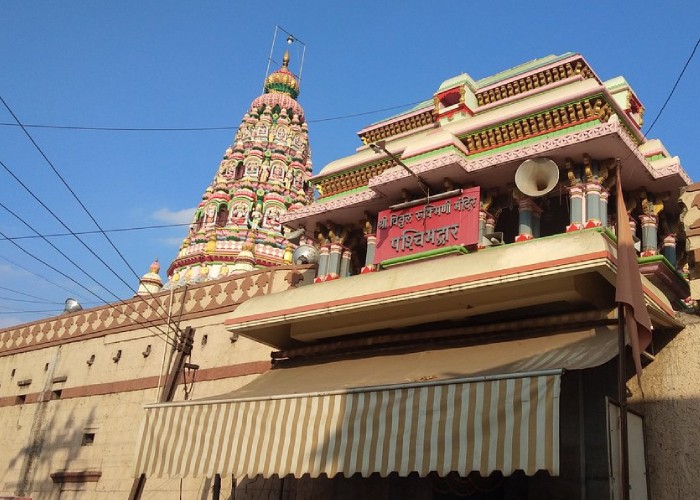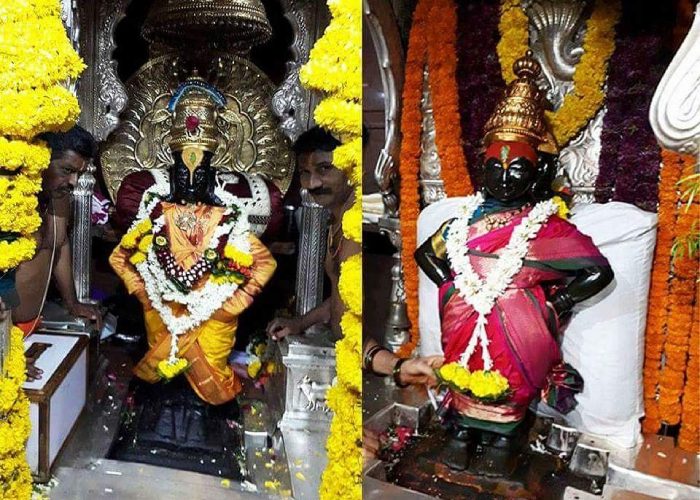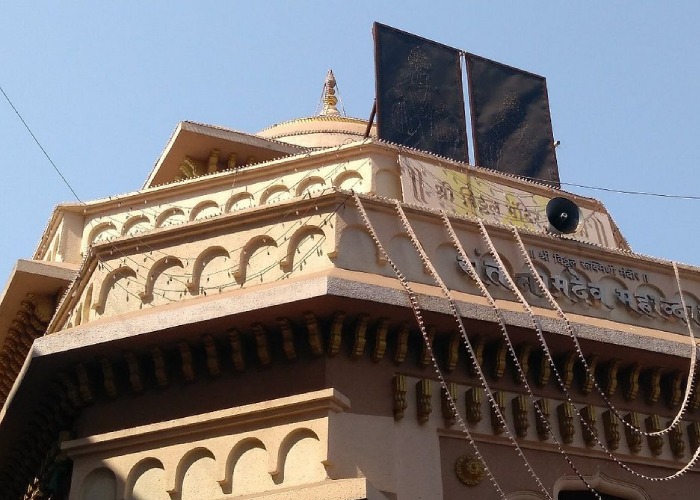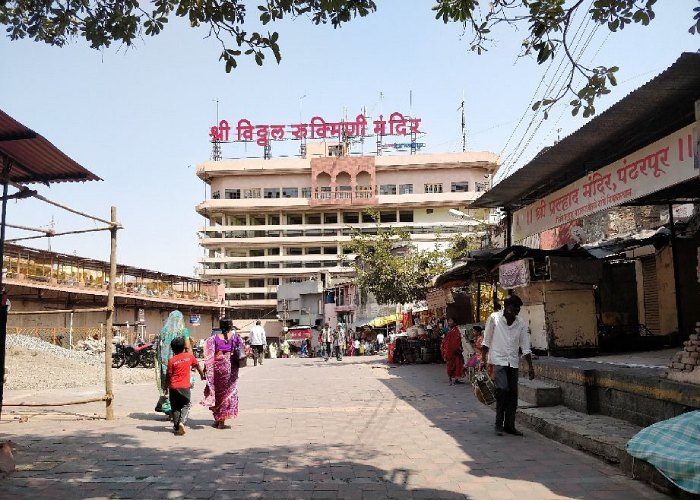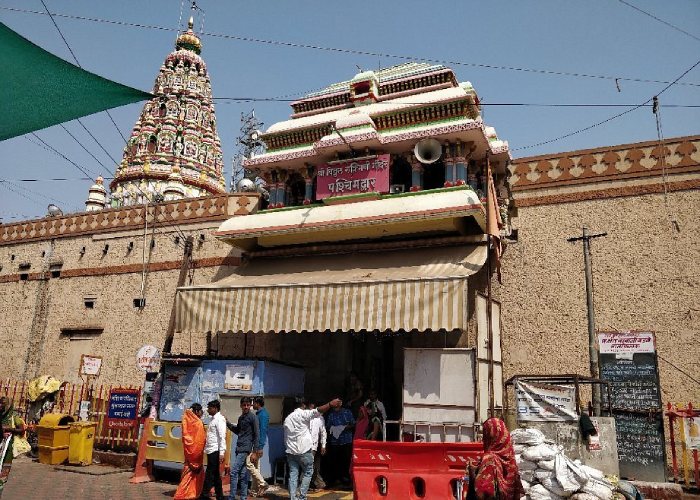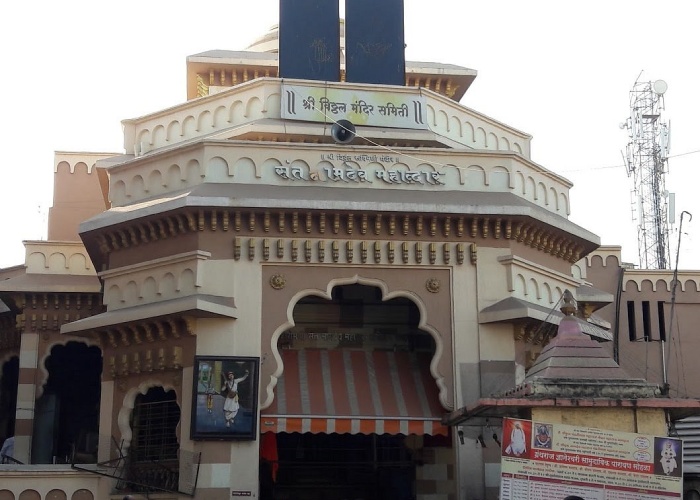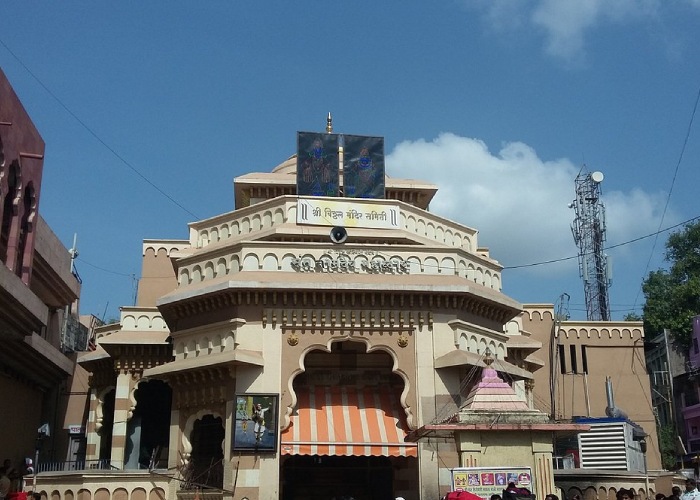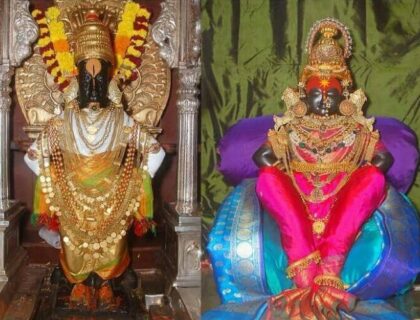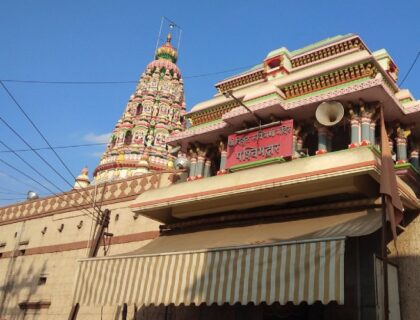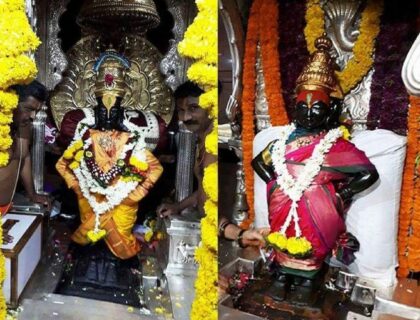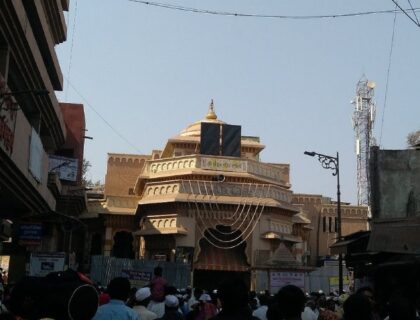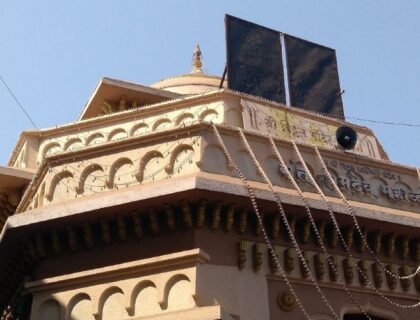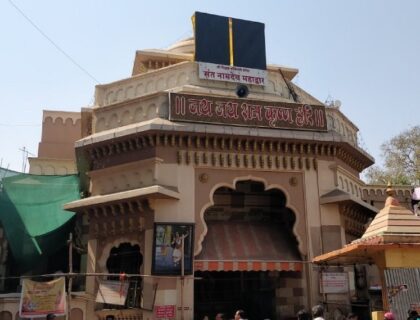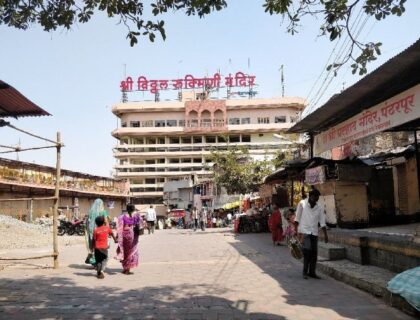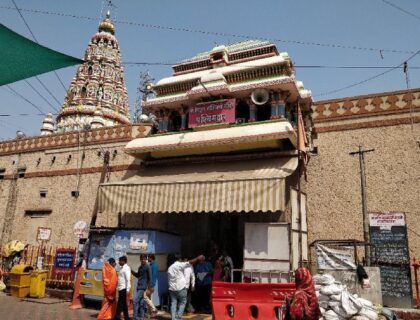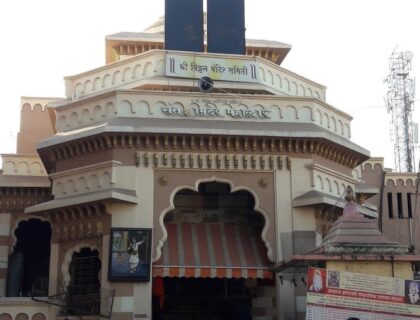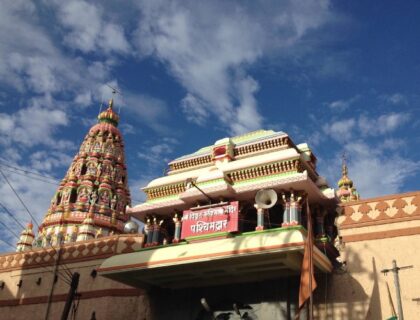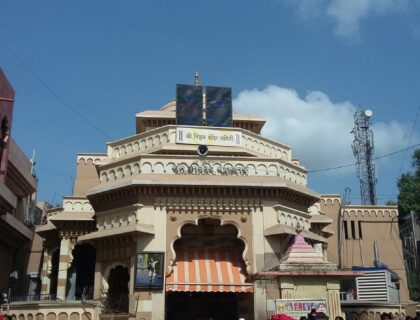Vithoba Temple Pandharpur
The Vithoba Temple, also known as the Shri Vitthal Rukmini Temple, is a Hindu temple located near the Chandrabhaga River in Pandharpur, Maharashtra, India. It is the primary place of worship for Vithoba, a manifestation of Vishnu or Krishna, and his consort Rakhumai. It is one of the 108 Abhimana Kshethrams of the Vaishnavate tradition.
The temple was built between 1108 and 1152 CE by King Vishnuvardhana of the Hoysala Empire after he was persuaded by the historical figure Pundalik. In addition, there is an inscription in the temple from Hoysala King Vira Someshwara from 1237 CE that grants the temple a village for its upkeep. It is Maharashtra’s most visited temple.
Legend Behind Vithoba Temple
The story of Vithoba’s arrival in Pandharpur is told through the character of Pundalik. Pundalik was the only child of Janudev and Satyavati. Who lived in the Dandirvan forest. After his marriage, Pundalik used to mistreat his parents. His parents wanted to take him to Kashi, the city of Lord Shiva, because of his bad behaviour, but his son Pundalik found out. Pundalik decided to accompany his parents to Kashi as well. Pundalik continued to misbehave with his parents along the way.
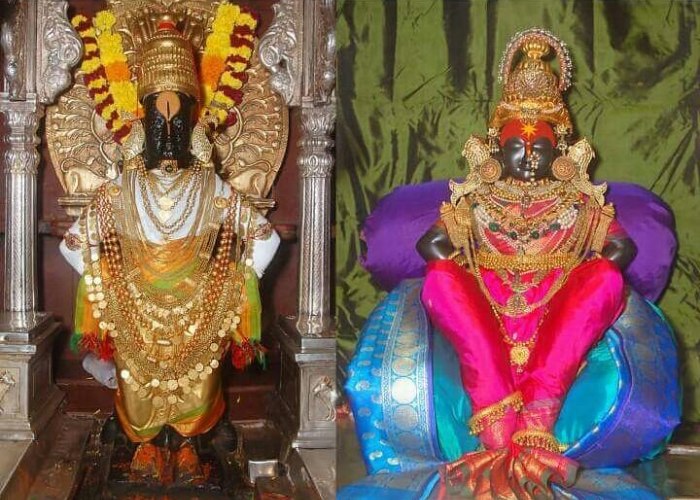
The ashram of sage Kukkutaswamy was on the way to Kashi. Pundalik decided to stay in this ashram. A nighttime incident with Pundalik made him realise the misbehaviour he had with his parents. He started serving his parents. Pundalik’s test was taken by Lord Shri Krishna. Lord Krishna appeared outside Pundalik’s house while he was feeding his parents.
Pundalik sensed Lord Krishna’s presence. But he didn’t leave until he’d fed his parents. Lord Krishna was very pleased with this work and requested that Pundalik request a boon. Pundalik requested that Lord Shri Krishna stay in Pandharpur and bless the true devotees. Then Lord Shri Krishna accepted this living in the form of Vithoba.
History of Vithoba Temple
The temple was built by King Vishnuvardhana of the Hoysala Empire between 1108 and 1152 CE upon being convinced by the historical figure Pundalik. Although parts of the temple date back to the 12th or 13th centuries, the current structure, with dome motifs and lobed arches, dates to the 17th century or later. Afzal Khan attempted to destroy the temple, but the original central figure of the shrine was protected by the Brahmin priest Badve, while Afzal Khan destroyed a similar idol.
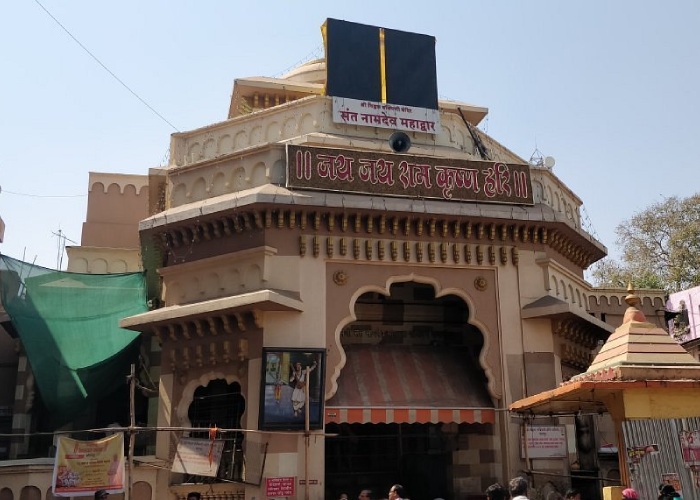
The story of the temple’s first step, known as “Sant Namdev Maharaj Payari” (Sant Namdev Maharaj Step), is fascinating. Namdev, the child and future saint, was a devoted follower of Vithoba. One day, his mother asks him to perform the “naivedya” ritual (any food prepared in the house is first offered to God; the ritual consists of placing the offering plate before the deity, sprinkling water around the plate, and praying to God). Namdev performs “naivedya” and waits for God to appear and accept the offering. But he is disheartened. He continues to pray, pleading with God to come in person and accept the offering.
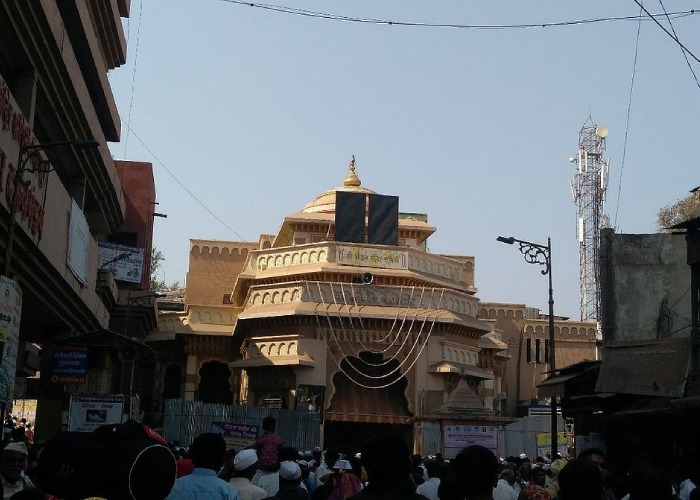
With no response, the child begins to beat his chest at the feet of God. When God sees Namdev’s utmost devotion and innocence, he appears, eats the offering, and blesses him. Namdev requests to be present in the “first step” at His temple so that countless devotees can touch him before having the “darshan” (view). As a result, the first step is known as “Sant Namdev Maharaj Payari.” Tukaram, a 17th-century Krishna devotee, is also said to have spent his final days in the temple.
The architecture of Vithoba Temple
The main entrance of Lord Vittala’s Temple faces the Chandrabhaga or Bhima River. The entrance features Namadev and Chokamela’s Samadhi. Pilgrims will enter the temple after praying to the Devotees. As the first Shrine, a small Ganesh Shrine is present within the temple. Then there’s a small room where bhajans are performed.
A small shrine dedicated to Garuda and Hanuman. Then, after a few more steps, we can see Lord Vittala’s face. We can see Mukha Darshan at any time without having to wait in queue. There is an entrance to the queue complex outside the temple for Padha Darshan (touching the Lotus Feet of the Lord).
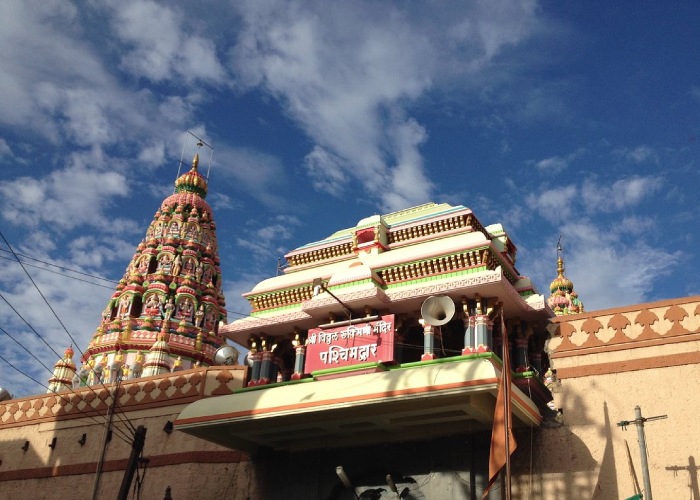
It will lead to many small Bhakta shrines before reaching Lord Panduranga. We are able to touch the Lord’s feet. We feel the best when we touch the Lotus feet of the Lord. Rukmini Devi, Satyabhama Devi, Radhika Devi (Rahi), Lord Narasimha, Lord Venkateshwara, Goddess Mahalakshmi, Nagaraj, Ganesha, and Annapoorna Devi all have shrines. Another mandap is where all devotees play like Krishna did with the Gopikas.
Facts about Vithoba Temple
- Pandharpur’s Vithoba temple is the main place of worship for the Hindu deity Vithoba, who is thought to be a local form of the god Krishna or Vishnu, and his consort Rakhumai. It is Maharastra’s most visited temple.
- There are six gates in total in this large temple. The Namdev gate is the eastern entrance to this temple. A standing image of Vithoba is enshrined in the sanctum. The image is stylistically from the 5th century BC.
- The idol of the deity Vitthala or Vithoba is three and a half feet tall and made of black stone. The idol is adorned with a Shivalinga on top of his head and the Kaustubha Mani around his neck.
- The deity is treated as a living image and is attended to with daily normal functions, like bathing, dressing, meals called bhog, and resting times in regular intervals.
- In May 2014, the temple became the first in India to invite women and people from backward classes as priests.
- Although parts of the temple date back to the 12th or 13th centuries, the current structure, with dome motifs and lobed arches, dates to the 17th century or later.
- A dip in the holy river Chandrabhaga, on the banks of which Pandharpur is located, is thought to have the power to wash away all sins. All devotees are permitted to touch the feet of the Vithoba idol.
- The Vithoba temple has become the primary temple in India to invite women and those from backward communities who trained to become monks and priests in various temples.
Famous Festivals In Vithoba Temple
- Krishna Janmashtami – Lord Krishna was born on Ashtami, the eighth day of the Hindu month of Bhadra. The celebrations at the Temple begin early in the morning and continue until late at night.
- Ekadashi – The two most important Vithoba festivals are Shayani Ekadashi in the month of Ashada and Prabodhini Ekadashi in the month of Kartik.
- Holi – This festival is celebrated in the month of Phalgun (Feb – March). During the celebration, people celebrate with colours and also celebrate and enjoy in temples complex.
How to Reach Vithoba Temple
By Air: The nearest airport is Solapur Airport at a distance of nearly 78 kilometres from Vithoba Temple.
By Rail: The nearest railway station is Kurduvadi Junction at a distance of nearly 51.7 kilometres from Vithoba Temple.
By Road: Local Buses and taxis connect Pandharpur to all of Maharastra’s major tourist destinations.
Also Read – Dwarkadhish Temple Dwarka
Support Us
If our content helps you even 1% in gaining information about the temple, please support us by contributing any amount, our UPI ID is - q417999792@ybl Or pay using QR CODE >>> Click Now
Location
Facilities
- Drinking Water
- Pooja Item Shops
- Prasad Shops
- Restaurants Nearby
- Resting Room

